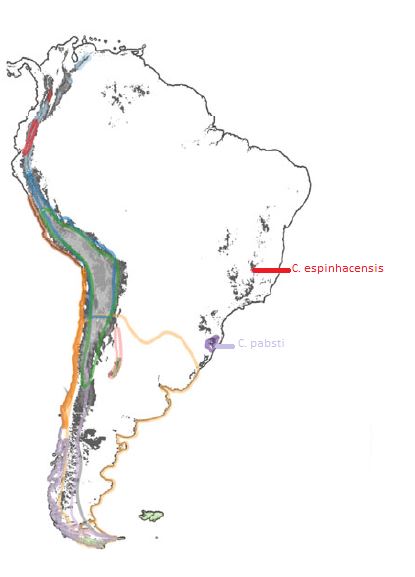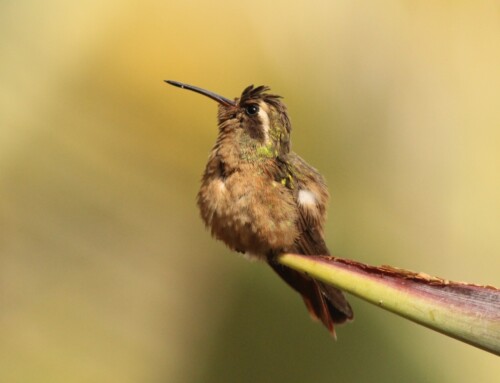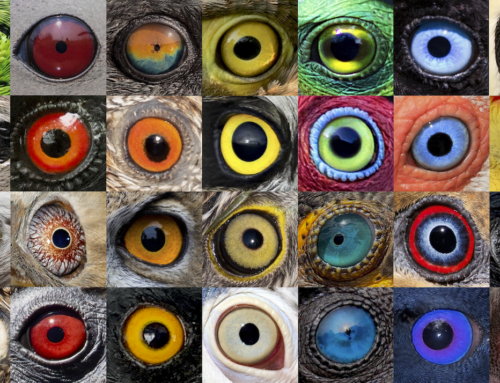Discovery of new species supports previous climatic and environmental connections between the Andes Mountains and the mountains of eastern Brazil
LINKED PAPER
A new species of Cinclodes from the Espinhaço Range, southeastern Brazil: insights into the biogeographical history of the South American highlands. Freitas, G.H.S., Chaves, A.V., Costa, L.M., Santos, F.R., Rodrigues, M. 2012. IBIS. DOI: 10.1111/j.1474-919X.2012.01268.x VIEW
Most ornithologists are well aware of the great diversity of birds from the Andes Mountains that cross from north to south the west of South America. Countries like Ecuador, Colombia and Peru are the mecca of birdwatchers, where the number of endemic species is very high.
However, few people know that in the east of Brazil, there is another mountain range, not so high, but with high rates of endemism. It is the Cordillera do Espinhaço (herewith Espinhaço range), located between parallels 17 and 43 south, with an extension of 1000 km north-south. ‘Espinhaço’ is a Portuguese word for backbone, so this mountains form a type of backbone in Eastern Brazil (Figure 1).

It was in this mountain range that we discovered a new species of bird, from the Furnariidae family (the South American ovenbirds), one of the largest fully endemic families of the Neotropical region.
The new species belongs to the genus Cinclodes and was named C. espinhacensis, because, apparently, it is endemic to the southern portion of the Espinhaço range.
Today, 16 species of Cinclodes are recognized by ornithologists (Rader et al. 2015), all of them with a very restricted geographical distribution in the mountains or cold regions of South America, mainly in the Andes. All Cinclodes are basically terrestrial; search for their food in the soil and generally their habitat is associated with small bodies of water, such as puddles and streams. Cinclodes species usually display easily to anyone who wants to see them. They stand on perches uncovered by vegetation and sing as they spread their wings, which eventually ends up showing their white or brown spots on the wing feathers.

Figure 2 Range distribution of Cinclodes species highlighting the new species C. espinhacensis and its sister species C. pabsti. Modified from Rader et al. 2016
Another biological feature of this group of birds is that they live in extreme environments, such as the dry prairies of the puna in the Andean highlands, the Atacama Desert in Chile and near the glaciers of Tierra del Fuego, where cold and wind prevail.
Understanding of Espinhaço birds has increased greatly in recent years (Vasconcelos & Rodrigues 2010). Many remarkable records have been made in the region (Rodrigues et al. 2011), including the relatively recent discovery of three endemic bird species (Vielliard 1990, Bornschein et al. 2007, Gonzaga et al. 2007). These recent discoveries indicate that poorly surveyed areas still remain in the region that might provide additional surprises.
We recorded over 30 Cinclodes individuals, including some in breeding pairs, at 10 localities in the Serra do Cipó region. We collected 10 individuals and audio-recorded calls and songs. This material was compared with Cinclodes pabsti (its sister species that occur in the mountaintops of southern Brazil), museum skins, DNA samples and audio recordings.
The Serra do Cipó region lies in the southern portion of the Espinhaço range. The Espinhaço range supports a unique habitat above 900 m called campos rupestres (rocky fields), which is characterized primarily by quartzite rocky outcrops but also contains other habitats, including open fields and woodlands (Fernandes 2016). This habitat contains a large number of endemic plants and animals, many of which have biogeographical similarities to taxa in other mountains and cold environments in South America, specially the Andes.

We compared the new Cinclodes and C. pabsti sequences generated in the present study with previously published sequences of four mtDNA markers from other Cinclodes spp. to establish the relationships of the new species with other members of the genus. We used sequences of the COI, COII, ND3 and Cyt-b mtDNA genes.
Cinclodes espinhacensis is restricted to the southern Espinhaço Range. Its southernmost locality is c. 1140 km from the northernmost locality of C. pabsti. Although the species can occur at altitudes of 1100 m, it is recorded only in association with the highest mountains, c. 1500 m altitude, where the moist air mass from the Atlantic Ocean is trapped, forming frequent misty conditions, termed the ‘nebular belt’.

© L.M. Costa
All of the tested phylogenetic reconstruction methods place C. espinhacensis as the sister species to C. pabsti. The separation of those two species is estimated at c. 220 000 years ago, during the late Pleistocene. The origin of the genus Cinclodes is dated at c. 7.34 Mya, during the Late Miocene. The Early Pliocene marks the separation of the Andean–Patagonian lineages from the Brazilian highlands lineage c. 4.25 Mya. The diversification of the genus occurred mainly during the Pleistocene, with all extant species being derived from lineages diverging between 2.5 million and 87 000 years ago.
Severe drought-like conditions marked the Late Miocene–Pliocene, forming an arid corridor and enabling colonization of the highlands of southeastern Brazil and the Andean region, which at that time harboured more suitable, moister climates and thereby provided refuges for the ancestors of the extant mountain flora (Safford 1999).
This discovery illustrates remarkable biogeographical connections among the cold mountain regions of South America, especially the Andes.
Considering the small number of known locations for this species and the potential for habitat reduction or alteration, we suspect that C. espinhacensis is currently threatened with extinction. Our goal in the coming years is to assess the conservation status of the species. For this we need to discover more populations of the species along the Espinhaço range and to unravel its reproductive biology.
References
Bornschein, M.R., Maurício, G.N., Belmonte-Lopes, R., Mata, H. and Bonatto, S.L. 2007. Diamantina Tapaculo, a new Scytalopus endemic to the Chapada Diamantina, northeastern Brazil (Passeriformes: Rhinocryptidae). Revista Brasileira de Ornitologia-Brazilian Journal of Ornithology 15: 151–174. VIEW
Fernandes, G.W. 2016. Ecology and Conservation of Mountaintop grasslands in Brazil. Springer International Publishing. VIEW
Gonzaga, L.P., Carvalhaes, A.M.P. and Buzzetti, D.R.C. 2007. A new species of Formicivora antwren from the Chapada Diamantina, eastern Brazil (Aves: Passeriformes: Thamnophilidae). Zootaxa 1473: 25-44. VIEW
Rader, J.A., Dillon, M.E., Chesser, R.T., Sabat, P., and del Rio, C.M. 2015. Morphological divergence in a continental adaptive radiation: South American ovenbirds of the genus Cinclodes. Auk 132: 180–190. VIEW
Rader, J.A., Newsome, S.D., Sabat, P., Chesser, R.T., Dillon, M.E. and del Rio, C.M. 2017. Isotopic niches support the resource breadth hypothesis. J. Anim. Ecol. DOI: 10.1111/1365-2656.12629. VIEW
Rodrigues, M., Carrara, L.A., Faria, L.P. and Gomes, H.B. 2005. The birds of “Parque Nacional da Serra do Cipó”: the Rio Cipó valley, Minas Gerais, Brazil. Revista Brasileira de Zoologia 22(2): 326-338. VIEW
Safford, H.D. 1999. Brazilian Páramos I. An introduction to the physical environment and vegetation of the campos de altitude. J. Biogeogr. 26: 693–712. VIEW
Vasconcelos, M.F. and Rodrigues, M. 2010. Patterns of geographic distribution and conservation of the open-habitat avifauna of southeastern Brazilian mountaintops (campos rupestres and campos de altitude). Pap. Avulsos Zool. 50: 1–29. VIEW
Vielliard, J.M.E. 1990. Uma nova espécie de Asthenes da Serra do Cipó, Minas Gerais, Brasil. Ararajuba [Revista Brasileira de Ornitologia-Brazilian Journal of Ornithology] 1: 121–122.
Image credit
Featured image: Cinclodes espinhacensis © L.M. Costa
If you want to write about your research in #theBOUblog, then please see here.





